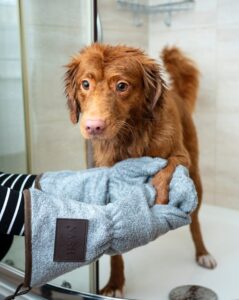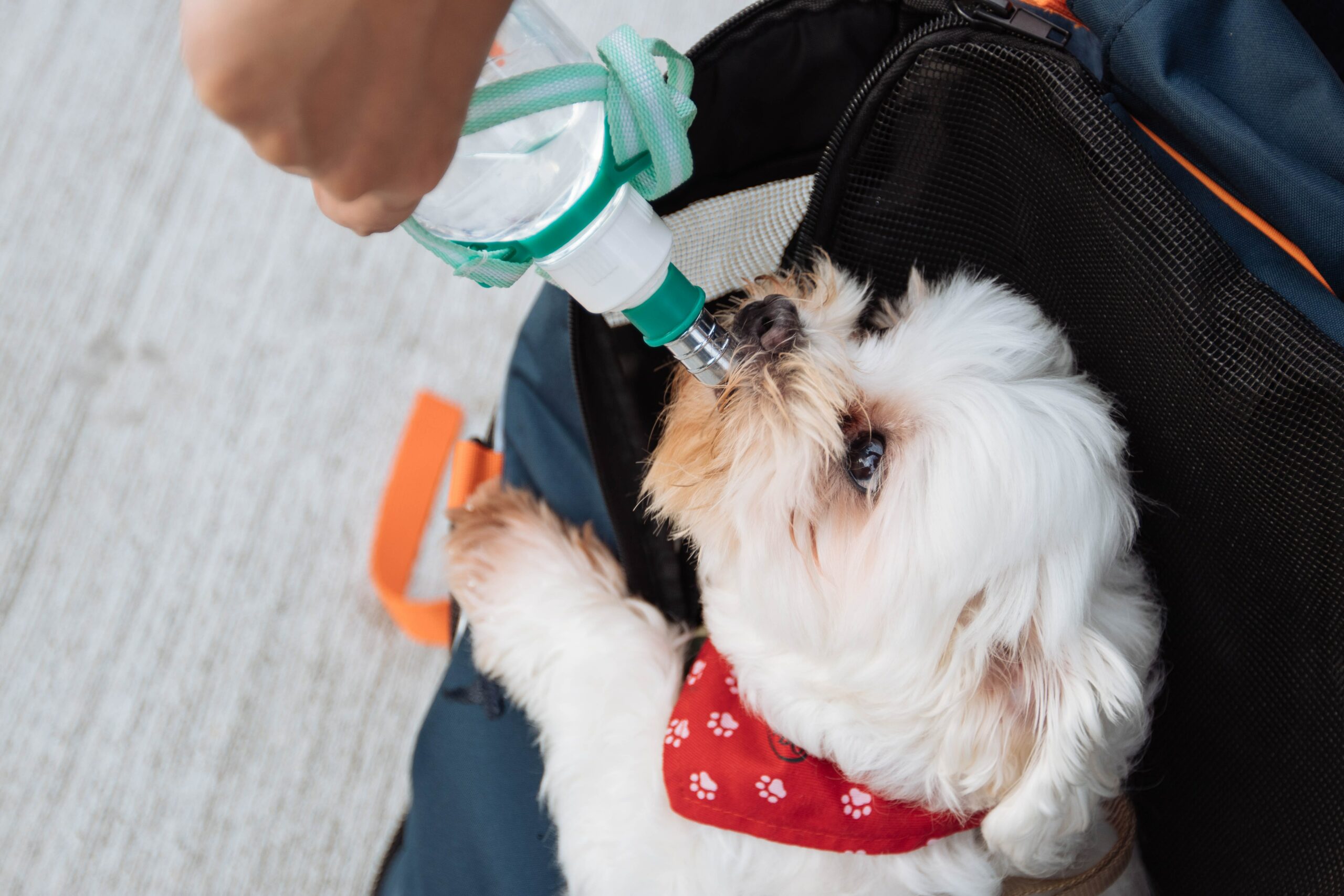You care deeply about your dog, so naturally you want to do everything you can to keep them safe and happy. From regular vet visits to vaccinations to feeding them a proper diet, dog lovers are eager to check all the boxes that will keep their pup healthy.
But have you given much thought to the water your dog is drinking and bathing in?
Why Does My Dog Need Filtered Water?
Filtering your dog’s water might sound unnecessary at first, but there are actually several reasons why this precaution is a great idea.
First, let’s consider the fact that water is one of the most essential components of health for both humans and dogs. Staying well hydrated helps with joint health, temperature regulation, digestion, and much more. Ingesting and bathing in clean, contaminant-free water is better for your health—and your dog’s—than water that hasn’t been filtered.
You might be thinking, “But the water that comes out of my tap is pretty clean already!” In a lot of cases, this is correct. Tap water does go through a purification process, but regulations vary from city to city. This means that some regions have tap water that is much less clean than others.And even if your local water is clean, the pipes in older homes have been known to contaminate the water before it even reaches your tap.
This is why it’s a smart idea to filter the water that you put in your dog’s bowl, and maybe even the water that you bathe them with. You especially want to pay attention to the water you’re giving your dog if they’re very young or very old, as the immune system of these age groups tends to be more fragile.
Using Filtered Water for Drinking
 Most humans prefer filtered water for drinking, if anything just for the taste. Why not extend that same precaution to your dog, too? Drinking clean water helps dogs expel any unwanted toxins that are living in the body.
Most humans prefer filtered water for drinking, if anything just for the taste. Why not extend that same precaution to your dog, too? Drinking clean water helps dogs expel any unwanted toxins that are living in the body.
In addition to the health benefits, some dogs even prefer the taste of filtered water versus tap water—just like humans! The more your dog enjoys the taste of their water, the more they’ll drink.
Keeping your dog hydrated with filtered water can prevent them from being exposed to harmful contaminants such as pesticides, metals, chlorine, and even parasites. Here are some of the contaminants that could be living in your home’s tap water:
- Bacteria: Some tap water has been found to carry E.coli. Most groups of E.coli aren’t harmful to your dog, but this bacteria has been known to cause serious infections. This can lead to weakness, lethargy, vomiting, diarrhea, or even death.
- Chemicals: The fluoride compounds in some water sources can cause seizures or muscle weakness in dogs, in extreme cases.
- Metals: If you live in an old house, your pipes may be made of copper, which can contaminate the water. Copper can cause copper toxicity in dogs, which leads to dehydration, lack of appetite, or shock. Copper toxicity can also lead to cirrhosis of the liver. Some tap water might also carry high amounts of lead, which can cause gastrointestinal issues.
- Minerals: Hard water, or water with a mineral content greater than 121 mg/L, can lead to issues in your dog’s urinary tract.
- Parasites: Unfiltered water can contain parasites, including Giardia, which is caused when fecal matter makes its way into the water source. Giardia causes diarrhea, weight loss, fatigue, and nausea in dogs. It can be life threatening in puppies.
By filtering the water your dog ingests, you can avoid potential issues that may arise as a result of these contaminants.
Using Filtered Water for Bathing

Regular bathing and grooming is a critical component of all-around pet health. You should bathe your dog every month or two, depending on the breed and how much time your dog spends outdoors. Regular baths help to keep your dog’s skin and coat healthy. Bathing your dog can even help you avoid a flea infestation because you’re more likely to spot fleas before they become a huge issue.
But should you be bathing your dog in just any kind of water?
Filtered water is great for your dog’s skin, whether they are drinking it or bathing in it. Tap water can have high chlorine content, which can dehydrate your pup and even irritate their skin, eyes, and fur. Keep in mind that dogs are more sensitive to chlorine than most humans are.
Drinking and bathing in filtered water can also decrease tear staining in dogs. Tear stains are the dark marks that appear underneath your dog’s eyes, most noticeably in dogs who have light-colored fur on their face. Tear stains are caused by ingesting toxins, either in food or water. Exposing your dog to filtered water can decrease the size of their tear stains.
How to Test the Water in Your House
There are many reasons why you may want to test the water quality in your home, from taste to color to odor to health concerns. You may have noticed that your clothes aren’t getting as clean in the washing machine, or that your hair and skin aren’t getting as clean after you shower.
And, of course, you have to consider your dog. The same water-related issues that affect you can also affect your dog.
Here are some tips for checking the quality of your home’s water:
- Use an at-home test strip. Water testing kits can be purchased online or at your local home improvement store. Prices range from $25 to hundreds of dollars. These kits make it easy to test the water in your home. Just swirl the test strip in a container of tap water, wait a few minutes, and then compare the color changes on the test strip with the key included with your kit.
- Contact your county health department. Oftentimes, your local health department will help you conduct a test to check for nitrates or bacteria in your tap water.
- Call the Safe Drinking Water Hotline. According to the US Environmental Protection Agency, you can call 800-426-4971 to have your water tested by a state-certified laboratory.
How to Filter Your Dog’s Water
So you’ve decided to start giving your dog clean, filtered water. What’s the easiest way to do this?
It depends on how much money you want to invest. There is a water filtering solution for every household and every budget. Here are some of the most popular options:
- Buy a small water filter. This is the easiest and most cost-effective way to filter your water. These water filter pitches can hold anywhere from 1 to 5 gallons of water. They easily fit in your fridge or on your counter.
- Carry a filtered water bottle. Some water bottles have a built-in filter that will filter the water while you drink! Keep one of these bottles on hand if you spend a lot of time outdoors with your dog. This will ensure that your pup always has safe, clean drinking water on hand, even if you’re in the middle of a hiking trail.
- Install a faucet filtration system. These systems attach directly to your sink’s faucet. They filter more contaminants than pitcher filters do, and you will be able to go longer without changing the filter. These water filtration systems are more costly than pitcher filters, though.
- Install a water softener. This is the most expensive way to improve the water quality in your home. But if you can swing it, water softeners are great for delivering pure water to the entire family.
Give Your Dog Filtered Water for Drinking and Bathing
Whether you go with a one-gallon water filter pitcher or decide to install a water softener, deciding to filter your tap water can help both your pets and your family. Giving your dog filtered water for drinking and bathing can protect them from dangerous toxins and help them lead a long, happy, and healthy life.
photo credit: https://unsplash.com/photos/F94kUL8aQGA
https://unsplash.com/photos/pQVecS8pBNY
https://unsplash.com/photos/ikv10lHZUas
Love our content? Share it with a friend or link it to social media. Like short clips of cute household pets? Training tips? Follow us on instagram @nydognanny or on YouTube at nydognanny. Have some news you needs to get to dog and cat parents stat? Email info@newyorkdognanny.com with your article pitch.




